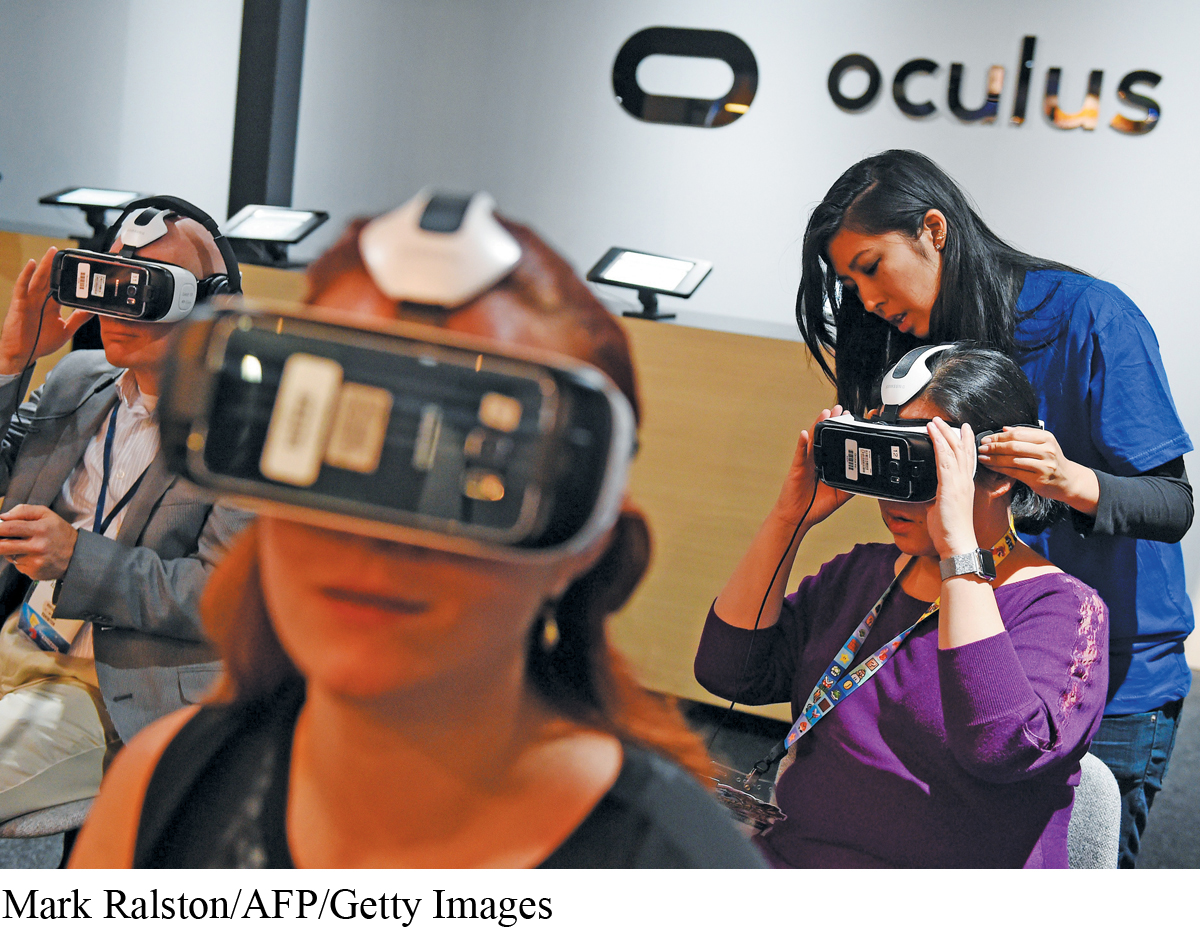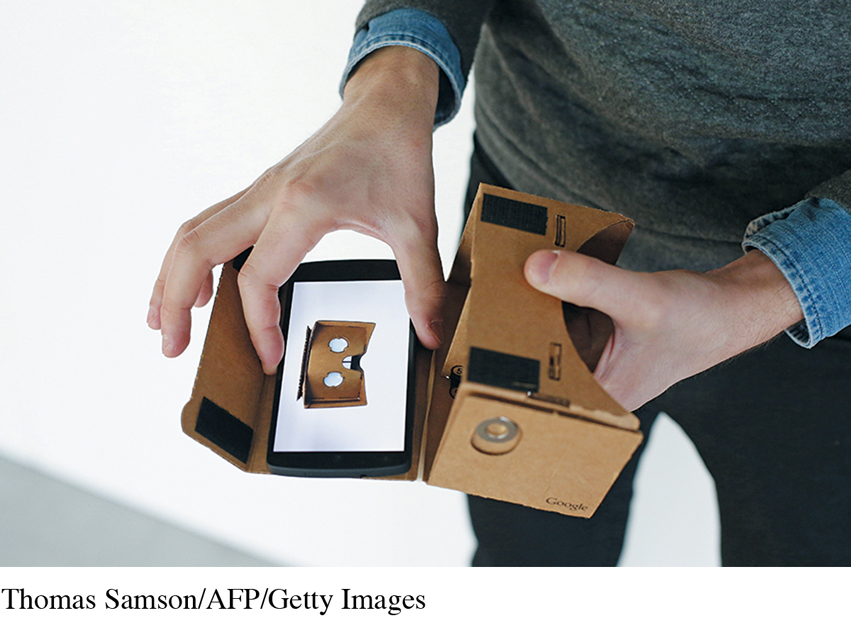Chapter 3 Introduction
DIGITAL MEDIA AND CONVERGENCE
3
Digital Gaming and the Media Playground

At least since the days of Johannes Vermeer, the Dutch master of photorealism painting in the seventeenth century, humans have sought to create real-
Since that time, of course, there have been advances into 3-
In 2014, Facebook purchased a small virtual reality company called Oculus VR, which invented the Oculus Rift, a virtual reality headset. Oculus invites us to “Step into the Rift. The Rift is unlike anything you’ve ever experienced. Whether you’re stepping into your favorite game, watching an immersive VR movie, jumping to a destination on the other side of the world, or just spending time with friends in VR, you’ll feel like you’re really there.”1 The device is scheduled to be released in 2016, and it has already received rave reviews. TechRadar reported that when combining the Oculus headset with Oculus Touch handsets, “total immersion” was complete. “I was not only able to pick up objects, I could shoot guns, slingshots, punch objects, pull heads off robots, and light sparklers on fire with a lighter,”2 the reviewer wrote.

But Facebook CEO Mark Zuckerberg’s bigger bet is that virtual reality will be the next generation of gaming style and then the leading interface for everything else in the media business, describing Oculus as a potential platform for experiences like sporting events and virtual classrooms.3 Facebook envisions digital games as a way for virtual reality to enter every part of our lives. After all, why would we want to “share” our experiences via two-
Still, the leading edge of virtual reality has always been entertainment. Competing with the Oculus Rift are the Sony Project Morpheus and the HTC Vibe, VR headsets and controllers for gaming also scheduled for release in 2016. Another competitor takes users out of the house. The VOID, a virtual reality play park, plans to open in 2016 in a suburb of Salt Lake City, and then expand with a chain of locations (the company calls them Virtual Entertainment Centers) around the world.4 Players will wear an Oculus-
For those who find this new tech too complicated, another option combines the advancements of smartphones with the low tech of a craft project: Google Cardboard, which turns a smartphone into an old-
And here we are, once again, on the quest to experience virtual reality—
ELECTRONIC GAMES OFFER PLAY, ENTERTAINMENT, AND SOCIAL INTERACTION. Like the Internet, they combine text, audio, and moving images. But they go even further than the Internet by enabling players to interact with aspects of the medium in the context of the game—

THE SUPER MARIO BROTHERS, Mario and Luigi, have been video game mainstays for over thirty years. In addition to the various Mario Brothers games (including the influential Nintendo original, released in 1985), the characters have appeared in cartoons, comic books, a live-
In this chapter, we will take a look at the evolving mass medium of digital gaming and:
Examine the early history of electronic gaming, including its roots in penny arcades
Trace the evolution of electronic gaming, from arcades and bars into living rooms and our hands
Discuss gaming as a social medium that forms communities of play
Analyze the economics of gaming, including the industry’s major players and various revenue streams
Raise questions about the role of digital gaming in our democratic society